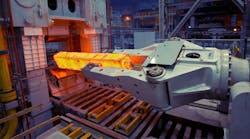The recent news that The Timken Co. has “redesigned” its engineering and product management programs is, to me, the best business story of the past year, or maybe longer, and stands as a counterexample to the cautious and unimaginative approach to business administration that has prevailed in manufacturing and industry in general over the past half decade.
That’s a sweeping statement, I know. It’s meant to be so, because no single company or even industry is particularly responsible for the scarcity of vision that has gripped the U.S. and global economy for the past several years. It’s probably the case that the financial panic and collapse of 2008-2009 is the principle cause, but there are other aspects to the problem than finance. Besides, corporate earnings have recovered handsomely in the past five years, and U.S. corporations alone are holding trillions of dollars in reserve. That’s unspent potential.
Another factor in the tentativeness for domestic companies seems to be the unbreakable grip of taxation and regulation; they have to pay to play, but it’s a circumstance that simultaneously discourages creativity and encourages a cynical symbiosis among government and the high levels of the corporate and financial communities.
The view from Wall Street and Washington is that everything is under control, but the truth is that U.S. GDP is slow and declining — now projected at 2% annually, adjusted for inflation, off the 3.4% average annual growth rate for 1946-2007. We look to small electronic and technology companies for innovation, not to manufacturers. We marvel at the creativity that turned a headphone design into a company worth $3 billion to Apple, but we stare indecisively at the gusher of opportunity presented by energy reserves that are easily within our grasp.
Into this tired routine, Timken’s news seems like a gale of fresh air. The headline of the story is surely the company’s plan to invest $60 million in its DeltaX Initiative, funding new talent (“200 engineers and technicians”) and “tools” to advance its product lines and improve its technical capabilities.
"Through DeltaX, we're integrating Timken talent, technology and tools in a way that will allow us to be even more agile and competitive," according to Timken president and CEO Richard G. Kyle. "From design to delivery, a more product-focused infrastructure, supported with new customer-facing systems, will replace our traditional functional structure.”
This is a move that will define Timken for the coming decade, but it follows the rather awkward decision to split the corporation in half — separating the bearings and other engineered products business from the specialty steelmaking operations, a combination that had been successful for more than a century. The breakup was forced on Timken by investor groups who argued it would enhance shareholder value, and the payout will prove that to be true.
But there is longer-term value in Timken’s new initiative. The company’s $60-million seems like a modest outlay in today’s corporate landscape, but 200 engineers and technicians will allow Timken to initiate projects with opportunities that surely are much higher in value.
It is a move driven by necessity, to be sure, and it would be refreshing if more manufacturers would recognize their own similar need for renewal.













